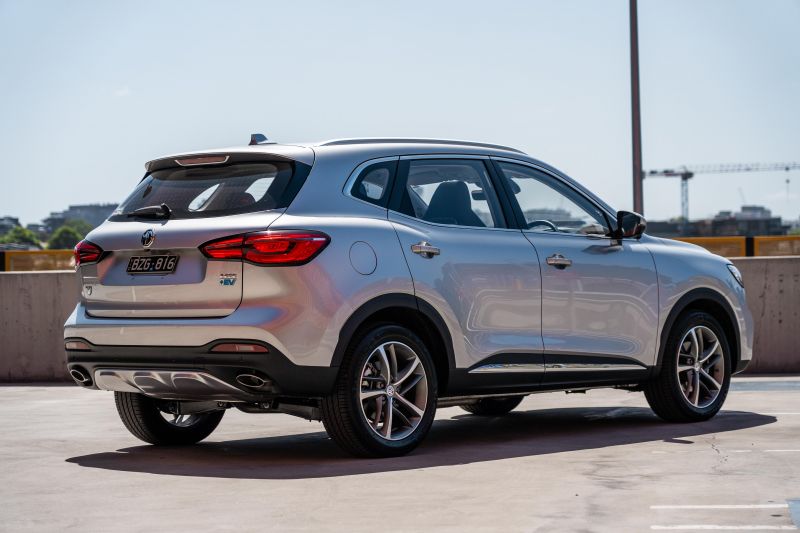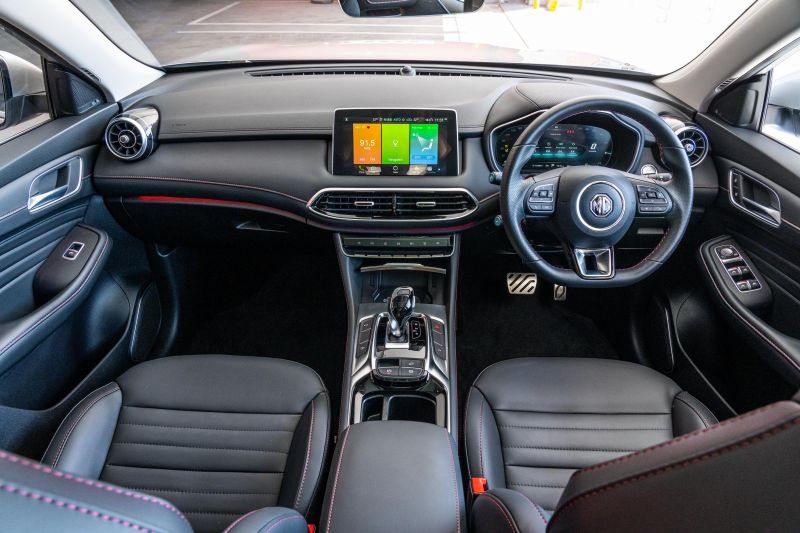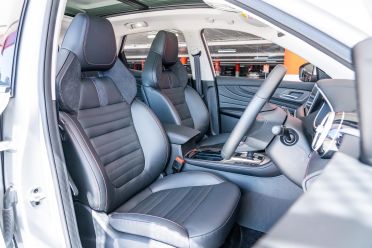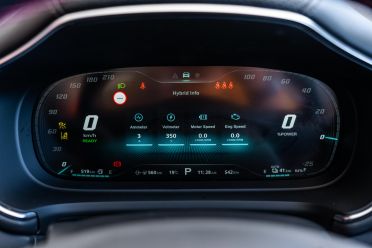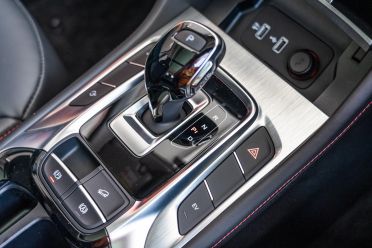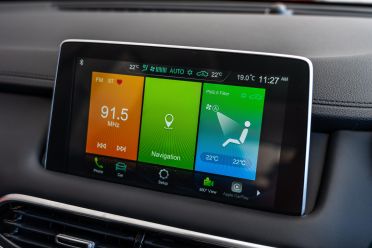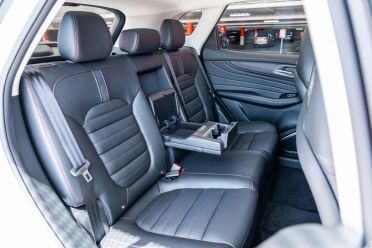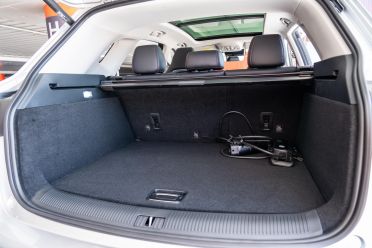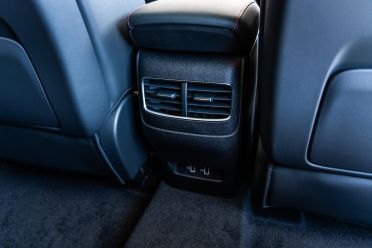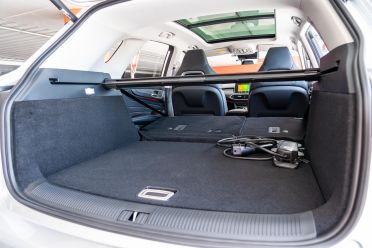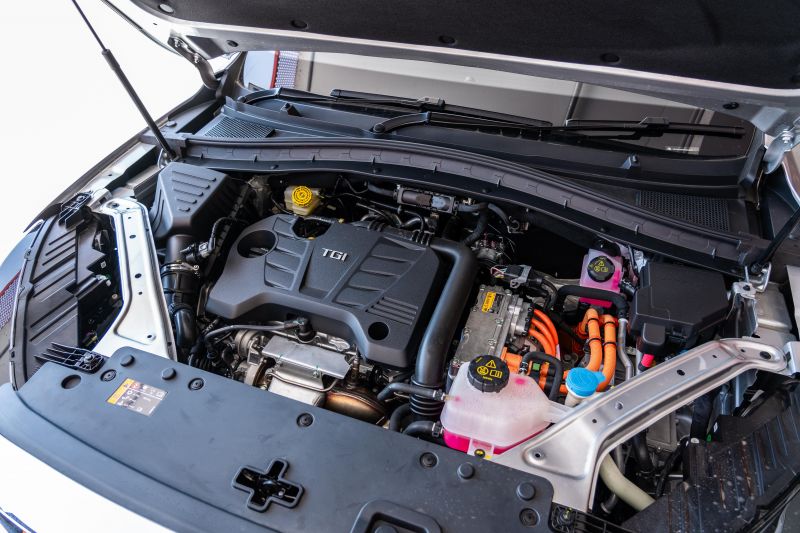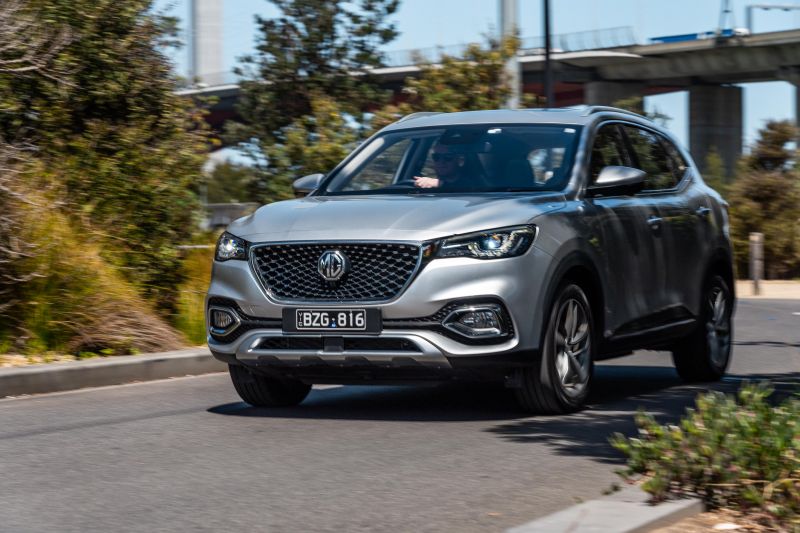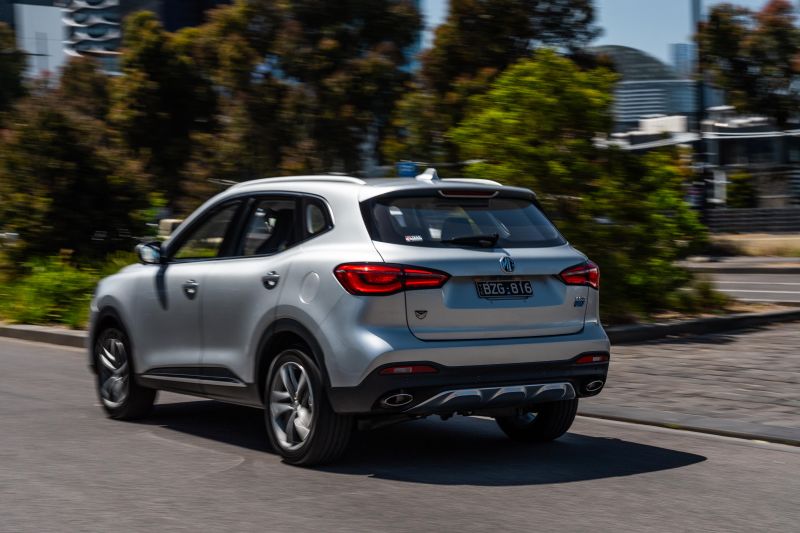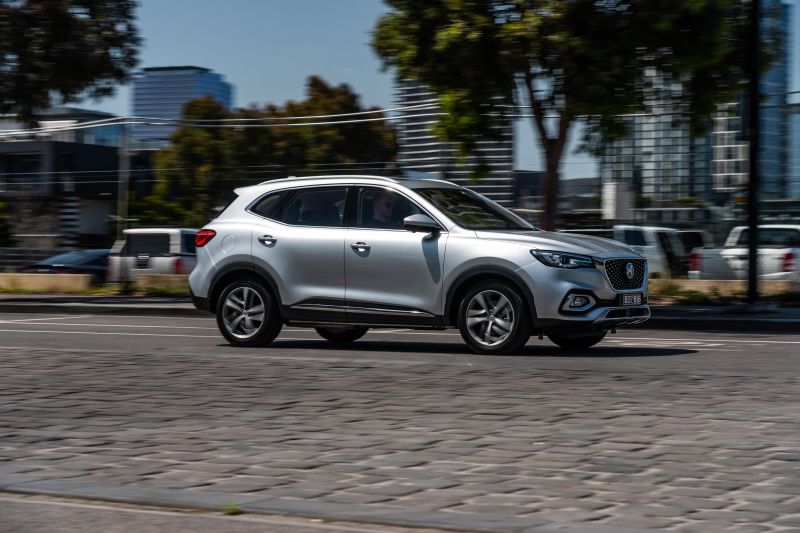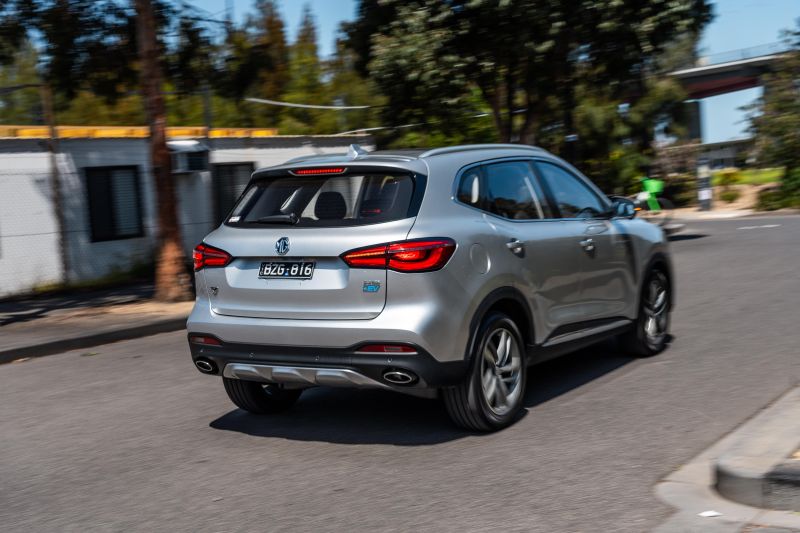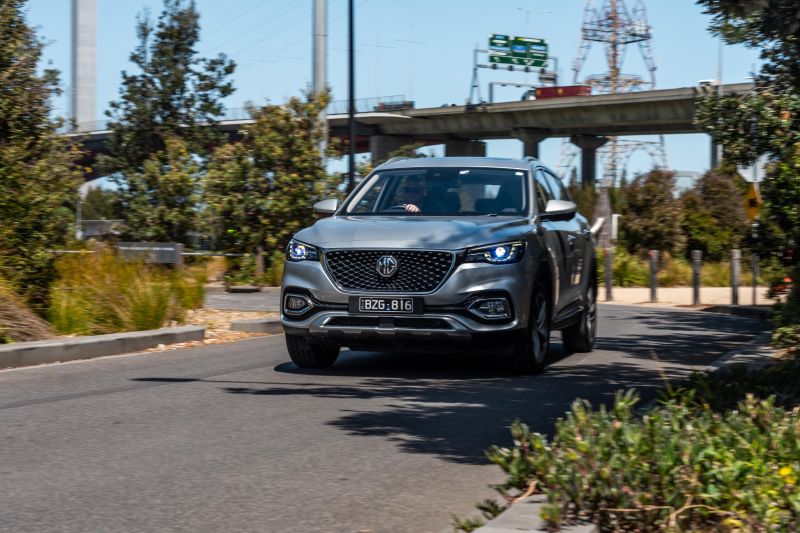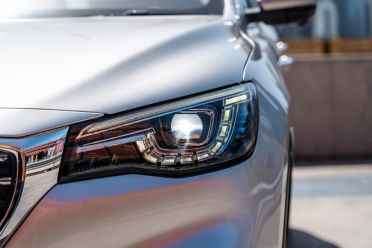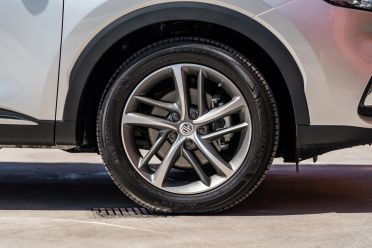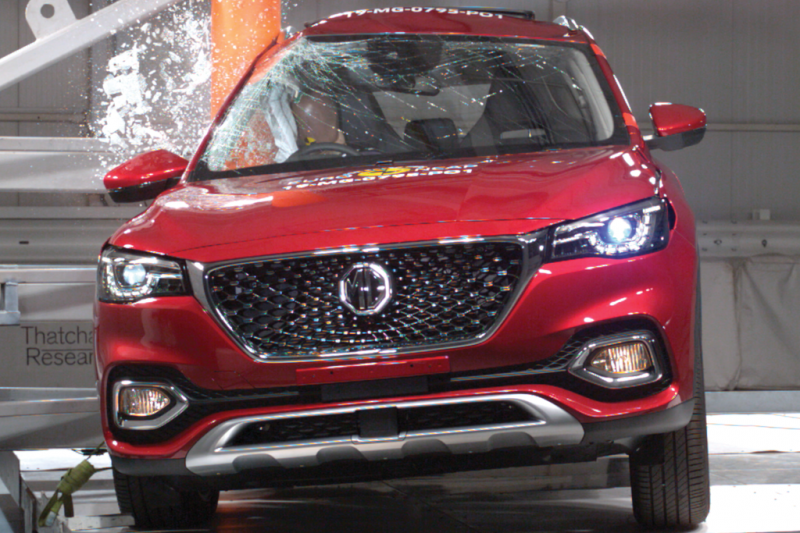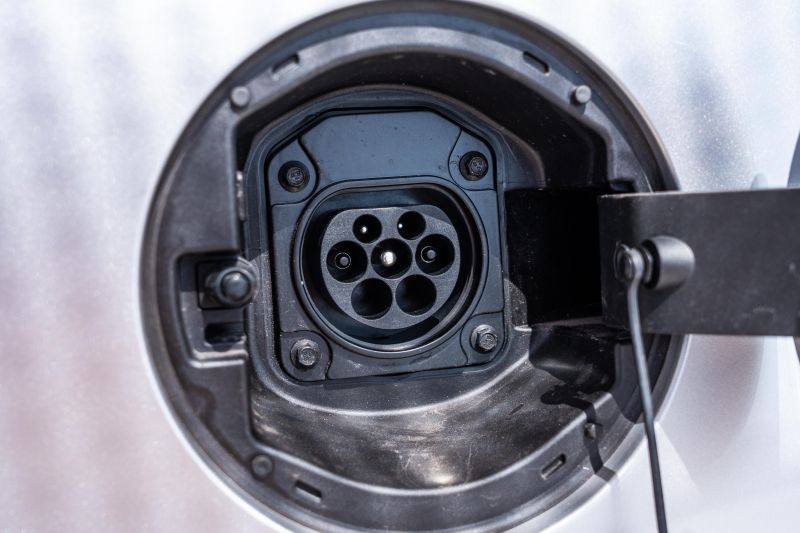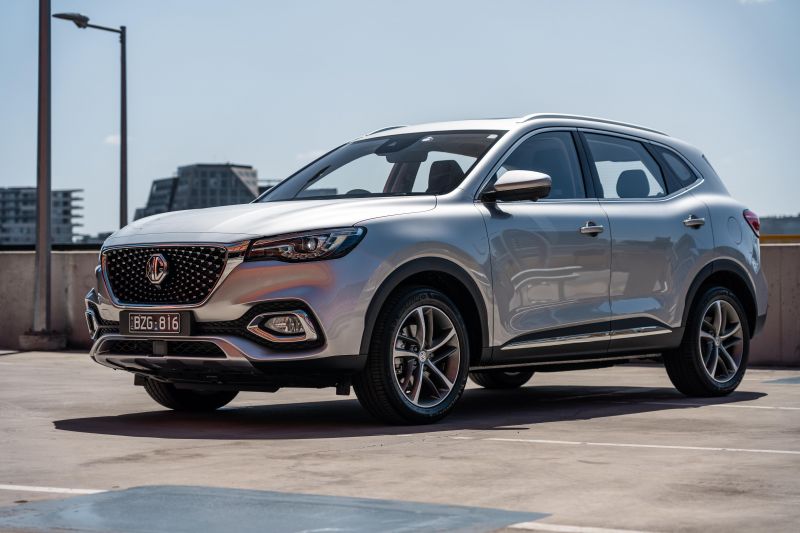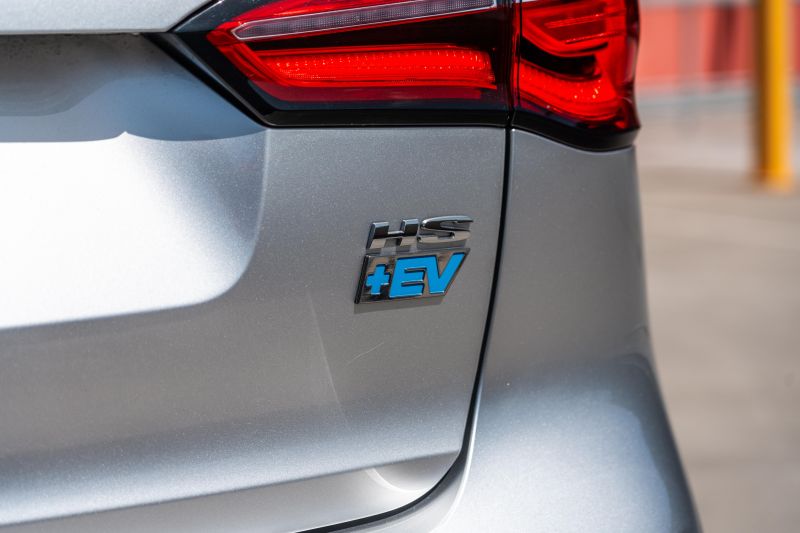The MG HS Plus EV has become Australia’s top-selling plug-in hybrid in recent times, taking the crown from longtime PHEV leader, Mitsubishi.
MG sold more than 1500 over the first nine months of 2023, accounting for about a quarter of total HS sales. Customers are evidently open to being upsold – so long as the product is suitable and the price premium deemed acceptable.
Reflecting its overall brand positioning, the MG HS Plus EV is also Australia’s cheapest PHEV; available drive-away for under $50,000. That makes it a pretty enticing proposition.
There’s no doubt the HS Plus EV will end up being many people’s first taste of plugging in a car and doing daily electric commuting – especially those who value the backup of its petrol engine.

How much does the MG HS Plus EV Essence cost?
MG advertises national drive-away pricing for the MG HS Plus EV from $48,990 for the base Excite, up to $51,990 for the Essence grade tested here. That makes the PHEV versions $14,000 more expensive than their equivalent petrol-only siblings.
Its closest obvious competitor is the Mitsubishi Eclipse Cross Plug-In Hybrid range advertised from $51,290 drive-away. But another way to look at the HS PHEV is that it costs about the same as a Toyota RAV4 GXL Hybrid, which doesn’t offer any proper pure-electric mileage.
Now in the real world, it doesn’t take much effort to find a new or low-mileage demo HS Plus EV rocking a decent discount – hint, hint.
What is the MG HS Plus EV Essence like on the inside?
The interior does bring quite a premium feel, belying MG’s usually cheap-and-cheerful ethos.
There is quality leather material – both real and synthetic – all over the place, ambient lighting, circular knurled vents, and solid fit-and-finish. It’s good-looking too. This car is cheap for what it offers, but doesn’t feel that way from the inside.
The front seats with leather upholstery and suede-like inlays have a lot of side and under-thigh bolstering and look expensive. They’re also heated and power adjustable for both front occupants. The ambience is completed by the Essence’s full-length tinted sunroof, with power-adjustable fabric cover.
It’s all laid out quite logically inside, using a large digital instrument cluster with quite sharp animations situated behind the reach-and rake-adjustable steering wheel. Cast your eyes to the left and you’re presented with a large-ish 10.1-inch centre display, under which is a bank of rocker switches.
On the plus side the centre screen displays a crisp overhead-view parking camera, has its own sat-nav, plus Apple CarPlay and Android Auto phone mirroring, and a decent six-speaker audio system. The layout of the menus is also fairly simple, even if the digital skin looks a little tacky.
However, it seems quite slow at processing inputs, sometimes taking seconds to respond to touch prompts. This is a minor irritation when it comes to adjusting things like driver-assist presets, but becomes infuriating when you’re trying to use the climate control menu or scrolling through radio stations.
If MG hadn’t fitted the HS Plus EV with such a slow and glitchy infotainment system, it would be genuinely hard to find any serious fault in here at all.
The back seats are excellent too, which is something we’ve noted as a typical characteristic of Chinese cars. At 194cm tall I had ample headroom (even with the opening glass roof) and legroom behind my own driving position. The seats recline too.
Amenities include a pull-down centre armrest with a felt-lined storage area, two USB ports, air vents, damped grab handles with LED reading lights behind them, and similarly premium materials throughout as those used up front – not something all cars can claim.
Boot capacity behind the powered tailgate is a fairly modest 451 litres (down 12L on the petrol HS), expanding to 1275L with the back seats folded. There’s space for charging cables under the floor alongside the tyre repair kit, and a pull-out cargo cover is standard.
What’s under the bonnet?
The powertrain combines a 90kW/230Nm electric drive motor fed from by a 16.6kWh lithium-ion battery, with a 119kW/250Nm 1.5-litre turbocharged petrol engine with a 10-speed transmission.
This EDU-transmission has six gears for the petrol engine’s drive and an electronic drive unit with its own set of four gears for the e-motor, which seems both unusual and complex for a PHEV.
The upshot is a system output of 189kW of power with 370Nm of torque, promising a sprightly 0-100km/h time of 6.9 seconds. But unlike the dual-motor Mitsubishi PHEV system, the MG HS is front-wheel drive only, so beware of wheelspin.
MG quotes a pure electric range of 63km on a charge before needing to touch the petrol tank, and a broadly logic-defying fuel consumption rating of 1.7L/100km on the combined cycle (blame regulators, not MG). The 37L fuel tank must be filled with 95 RON premium fuel, which is a downside.
The Type 2 charging port is on the rear-right-hand side of the vehicle and the fuel tank filler on the rear-left-hand side. The company also quotes a 1500kg braked towing capacity, matching the RAV4 Hybrid’s claim.
How does the MG HS Plus EV Essence drive?
Most PHEVs will prioritise all-electric power most of the time, until the battery is depleted, before switching on the engine. The exception is if you really pin the accelerator or override the ECU by selecting a different mode manually.
But the MG’s default driving mode regularly taps into petrol power even with surplus battery charge available, to the point where there was still some charge remaining after almost 200km of driving, with the MG often diving back into dinosaur juice.
The transition or handover between petrol and electric power isn’t overly in-your-face, but you can feel the engine kick in if you’re paying attention, despite MG’s claims to the contrary. You can also tell if you’re watching the nifty animated display in the large digital instrument cluster, which I usually did.
This calibration, which sees you using petrol and electric power above 40km/h almost all of the time, except for when coasting, means the best way to think about the MG HS Plus EV is as a normal hybrid with bonus EV range thrown in. This is reflected in the fuel consumption I saw of 6-6.5L/100km when leaving the car to its own devices.
A RAV4 Hybrid will do better than that, even without the same degree of pure EV range factored in.
However, as with all PHEVs, the vehicle’s merits all depend on how you drive it, so don’t despair. Simply jabbing a button next to the transmission activates EV mode, whereby the vehicle will indeed prioritise battery power and keep the engine off for as long as possible.
I managed 57km of electric range on a regular commute of city and highway driving at 22kWh per 100km – more than enough for an average work return trip for many people. This is something the RAV4 Hybrid, Haval H6 HEV or Nissan X-Trail e-Power can’t do: a full day’s driving using zero petrol.
And at this point, even if you have to do a few more miles using the petrol backup, your journey will remain a highly efficient one. You can also program the system to automatically retain a percentage of the battery’s charge in hand until you want to use it; for example if you’re returning to urban congestion.
Of course, people often forget to charge their PHEV, at which point they’re designed to revert to something like a more basic hybrid, using regenerative braking to keep the battery available at low speeds. Doing a drive loop this way, my average consumption was 8.0L/100km.
That efficiency leaves a bit to be desired to be honest, meaning you really need to ensure the HS Plus EV is kept regularly charged to be worth considering. It might be helpful if MG was to allow you to dial up the brake regen, which would bring the added bonus of reducing brake pad wear.
The main positives of the drivetrain are its genuine 50km-plus EV range and its significant amount of punch, with sufficiently quick acceleration to chirp those Michelin tyres and tug the wheel. It offers instant response from its combined turbocharged motor and electric propulsion when overtaking.
The negatives, aside from its fuel use when the battery is low, are the system’s propensity to over-rely on petrol power when it need not, even including vehicle start-up. One upside of hybrids is how silent they are first thing in the morning, so it’s odd to hear the MG PHEV noisily turn over in the driveway, presumably to warm up the battery.
In terms of charging, MG says a home 7kW wallbox on single-phase will recharge the 16.6kWh battery in five hours. However, you can also use a regular old three-prong socket and charge it overnight, making it far easier to live with if you have a driveway.
If your energy plan charges 30c per kWh of electricity (about standard where I live), then you can recharge the battery for about $5.
The HS PHEV weighs 1775kg, or 225kg heavier than the petrol-only model. It uses MacPherson strut front and multi-link rear suspension and speed-sensitive electric power steering.
In terms of driving dynamics MG has done a reasonable job with the setup, offering up a generally comfortable ride quality that only occasionally verged on being a little harsh over the odd larger pothole or expansion joint. Noise, vibration and harshness levels are also good.
While it’s not exactly a sports SUV, it stays relatively composed in corners at regular speeds and has good quality tyres. The brake pedal feel is also relatively well-judged.
The driver-assists include blind-spot detection and a lane-keeping aid with steering inputs. The latter system worked well on highway curves and stays in whatever setting you last used upon each restart, so you can keep it off if you prefer.
The adaptive cruise control system, controlled by a small stalk below the left-hand-side indicator, prompts the instruments to display a specific menu, in which you can check which distance setting you’re in.
What do you get?
HS Plus EV Excite highlights:
- Roof rails
- LED daytime running lights
- Rain-sensing wipers
- Tyre repair kit
- Rear parking sensors
- Proximity key and button start
- Auto-dimming rear-view mirror
- Dual-zone air-conditioning
- Heated front seats
- Powered driver’s seat
- 12.3-inch digital cluster
- 10.1-inch touchscreen
- Apple CarPlay and Android Auto
- Satellite-navigation
- 6-speaker audio
HS Plus EV Essence adds:
- 18-inch alloy wheels
- Michelin tyres
- LED headlights, tail lights
- Powered tailgate
- Electric heated door mirrors
- Panoramic glass sunroof
- Ambient interior lighting
- Metallic pedal caps
- 360-degree parking cameras
- Powered front passenger seat
- Two-tone part-leather seats
Is the MG HS Plus EV Essence safe?
Crash test organisation ANCAP awards the regular MG HS petrol five stars (2019) however the Plus EV PHEV is unfortunately unrated – what gives?
Standard safety features include:
- 6 airbags
- Autonomous emergency braking (AEB)
- Adaptive cruise control
- Lane-keeping aids
- Blind-spot monitoring
- Rear cross-traffic alert
- Traffic Jam Assist
How much does the MG HS Plus EV Essence cost to run?
MG offers a highly competitive seven-year unlimited kilometre warranty on both vehicle and battery, with roadside assist provided.
Service intervals are too short in terms of distance (if not time period) at 12 months or 10,000km. MG caps standard service pricing at $279, $399, $279, $456, $279, $1084 and $279 for the first seven services.
Car insurance costs vary across petrol, diesel, hybrid, and plug-in hybrid vehicles, meaning it’s smart to compare a number of quotes before signing on the dotted line.
CarExpert’s Take on the MG HS Plus EV Essence
The MG HS Plus EV costs a lot more than the petrol-only version, has the same poor infotainment system, isn’t nearly as fuel efficient as it claims to be, and lacks AWD as an option.
But it also offers great performance and usable daily EV range at a price point competitive with regular hybrids.
This fact, not to mention the spacious and plush interior and the seven-year warranty, is what’s making it a popular bridge to all-electric driving for thousands of Australians.
Some rough edges, but inarguable value, especially if you can pick up a discount.
Click the images for the full gallery
BUY: MG HS
MORE: Everything MG HS










